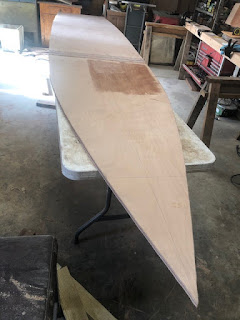Rounding the Mast
I fabricated a marking tool to mark guidelines on the square mast. Then the electric hand plane was used to remove unwanted material. It is a great tool and worth the investment, especially if you are as lazy as I am.
Then the electric plane was used to change 4 sides into 8, then 8 into 16.
I then sanded by turning a sanding belt inside out and using my own power to sand. It worked very well.
Do some final filling and sanding on the mast. Then apply spar varnish.








































